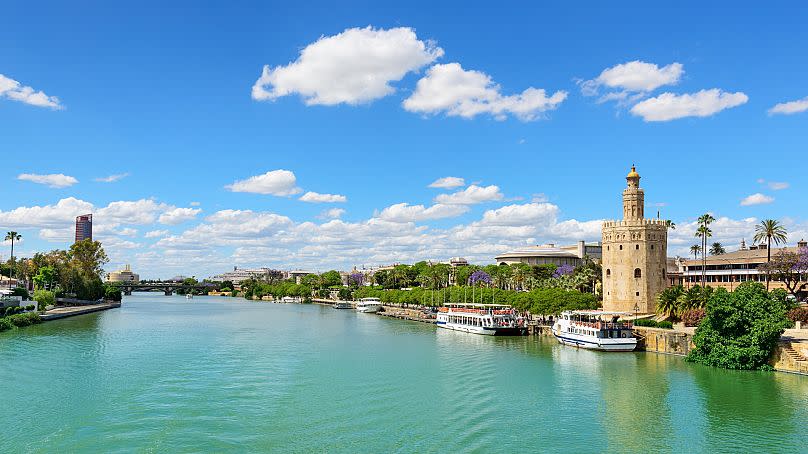Visit Andalusia for a taste of southern Spain’s sun, sea and celebration

From the pristine beaches of the Costa Tropical to the ancient port city of Cádiz, Spain’s sunny southern region of Andalusia is one of its brightest jewels.
Whether you want to relax and unwind on the sun-kissed beaches of the Costa del Sol or sample some delicious local cuisine, this huge coastal region has lots to offer.
Covering an incredible 17 per cent of Spain’s total territory with temperatures rarely falling into single figures, it’s the perfect place to escape the ravages of a northern European winter.
So if you’re heading for the Costa del Sunshine, what should you see and do? Here’s our lowdown on everything to enjoy in Andalusia, from carnivals to cuisine.
When is Cádiz Carnival?

Believed to be the oldest city still standing in Europe, the port of Cádiz was established by the Phoenicians around 1100 BC. Surrounded by the sea, these days the city is a charming mix of architectural styles, reflecting its rich and varied history.
If you want to get a true taste of Cádiz though, you need to visit during carnival season. Taking place every February, the city transforms itself into one huge party venue.
“Carnival music can be heard in every corner of the city and many of its citizens prepare their costumes, which in Cádiz are known as 'tipo' - some of them are true works of art”, explains Arturo Bernal Bergua, Minister of tourism, Culture and Sports of Andalusia.
“These are the days that people from Cádiz live with all their souls, it’s one of the most anticipated recreational events in the city and one of the most imaginative and ingenious Spanish carnivals.”
This year the epic 10 day celebration runs from 16 - 26 February. Believed to be the largest carnival in Spain, the first Sunday sees a large parade wind through the city streets.Fireworks, food, competitions and dancing take place for the full length of the festival - and sometimes even longer.
16 days from London to Morocco: All the places you can see on new rail adventure through Europe
Austria in winter: Why Vienna's sparkling ball season should be on every traveller's bucket list
What beaches can I visit in Andalusia?

While you’ve probably heard of the sun-drenched beaches of the Costa del Sol and Málaga, the Andalusian coastline is 800 km long.If you stray off the well-worn path, you’ll find some truly unique and unexpected landscapes.
One such wonder is El Acantilado del Asperillo, the highest dune cliff in Europe. A system of fossil dunes, the jagged rocky structures jut out along 12 hectares of the coast.
Equally eye-catching is the Bolonia dune, which reaches an impressive 30 metres in height and is over 200 metres in length. This dune system is part of Del Estrecho Natural Park, located on the northern side of the Strait of Gibraltar, the point at which the Atlantic Ocean meets the Mediterranean Sea.
Alongside the dunes, there are some stunning waterfalls in the region too, as Bergua explains.
“You can also visit one of the few freshwater waterfalls in Spain, that falls directly into the sea, in the natural area of Maro - Cerro Gordo, where some of the smallest and most hidden beaches in the country are located.”
“Smaller still is Rijana, in the Granada town of Gualchos, which is about 250 metres in length. In addition, the community also has what is considered the longest beach in Spain, Doñana, which is 28 km long and with restricted access.”
Where are the best places to discover Andalusian cuisine?

If you want to get a taste of the local cuisine, Bergua recommends following local food routes.
“A good way to get to know the cuisine and native products of Andalucia is to follow its gastronomic itineraries, such as the Almadraba Tuna route on the Cádiz coast, the Jabugo Ham route in Huelva or the rice route in Seville,” says Bergua.
“The gastronomy of the southernmost region of Spain is undoubtedly determined by its excellent climate, its long hours of sunshine and its proximity to the sea.”
The Andalusian tourist board runs tours for each of these routes, allowing you to learn more about how food is produced in the region.
The rice route will take you to the banks of the Guadalquivir river, where 40 per cent of Spanish rice is grown. As well as producing this essential cereal, the wetlands create a spectacular natural habitat, with 275 bird species nesting or wintering here.

 Yahoo News
Yahoo News 
